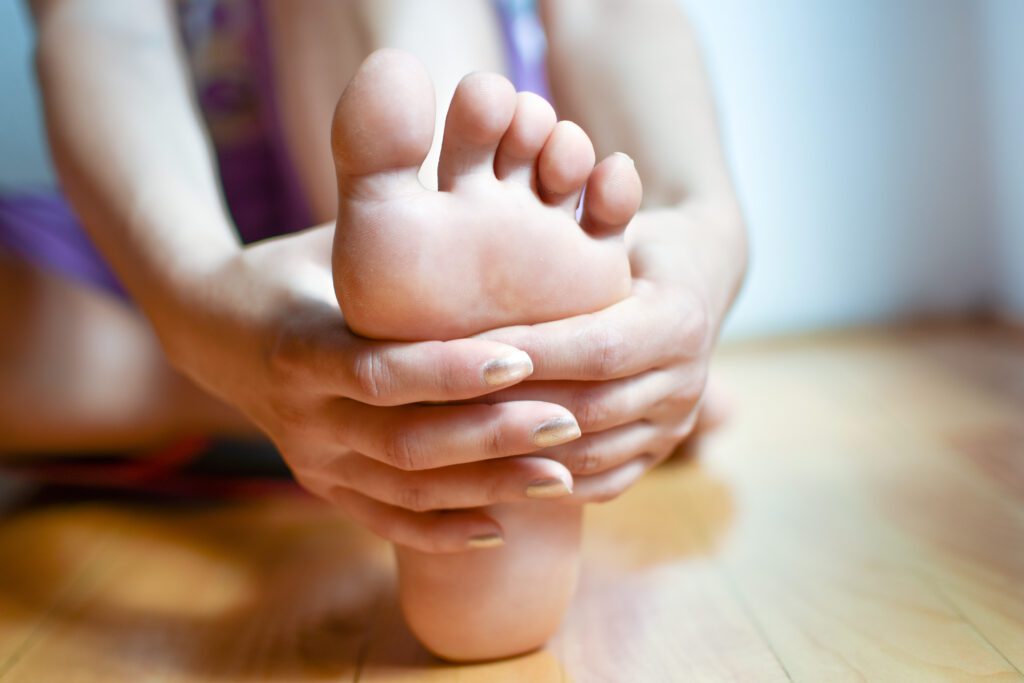Don’t Let Diabetes Jeopardize Your Foot Health
There are many health and wellness concerns for those with diabetes, foot health is one of those that is especially important. That’s because diabetes can cause nerve damage that decreases the chance of feeling pain, heat, and cold. If a person can’t feel their feet, injuries or even blisters won’t get noticed until they are infected. Take our quiz and learn the details of foot care and foot health for diabetics so you can better protect your feet!
1. True or false? About half of all people with diabetes have some kind of nerve damage, and the nerves in the feet and legs are most often affected.
2. Which of the following are possible symptoms of nerve damage in the feet?
A. Numbness, tingling, or pain
B. No symptoms
C. A lowered ability to feel pain, heat, or cold
D. All of the above
3. True or false? If you can’t feel pain in your feet, then you may not notice a cut, blister, sore, or other problem, and small problems can become serious if they aren’t treated early.
4. Which of the following are risk factors that increase the likelihood that a diabetic will develop nerve damage?
A. Having blood sugar levels that are hard to manage
B. Having diabetes for a long time, especially if your blood sugar is often higher than your target levels, and/or being older than 40
C. Being overweight
D. Having high blood pressure and/or high cholesterol
E. All of the above
5. True or false? Nerve damage, along with poor blood flow—another diabetes complication—puts a diabetic at risk for developing a sore or wound on the foot that could get infected and not heal. If an infection doesn’t get better with treatment, a toe, foot, or part of the leg may need to be amputated.
6. Which of the following is NOT a part of foot care that a diabetic should complete every day?
A. Check both feet every day for cuts, redness, swelling, sores, blisters, corns, calluses, or any other change to the skin or nails.
B. Wash your feet every day in warm water, dry, and apply lotion to the top and the bottoms of the feet.
C. Soak your feet in ice water.
D. Never go barefoot, and wear shoes that fit well.
E. Trim toenails straight across and don’t remove corns or calluses yourself.
7. What additional diabetes management habits, in addition to keeping your blood sugar in your target range as much as possible, will help with foot health?
A. Don’t smoke as smoking reduces blood flow to the feet.
B. Follow a healthy eating plan, including eating more fruits and vegetables and less sugar and salt.
C. Get physically active — aim for 10 to 20 minutes a day rather than an hour once a week.
D. Take all medications as prescribed by your doctor.
E. All of the above
8. Which of the following is a sign that it’s time to see your doctor?
A. Loss of the sense of touch or the ability to feel heat or cold very well, or a tingling, burning, or pain in the feet.
B. A change in the shape of your feet over time, or a change in the color and temperature of your feet, or the loss of hair on your toes, feet, and lower legs.
C. A blister, sore, ulcer, infected corn, or ingrown toenail, or dry, cracked skin on your feet, or thickened, yellow toenails, or fungus infections.
D. Pain in your legs or cramping in your buttocks, thighs, or calves during physical activity.
E. All of the above
9. True or false? Regular care at home and visiting your foot doctor every year (more often if you have nerve damage) for a complete exam, which includes checking for feeling and blood flow in your feet are your best bet for preventing foot problems.
compiled by ERIKA ALDRICH / Information from The Centers for Disease Control and Prevention
ANSWERS:
- True
- D. All of the above
- True
- E. All of the above
- True
- C. Soak your feet in ice water. Diabetics should never soak their feet.
- E. All of the above.
- E. All of the above.
- True
